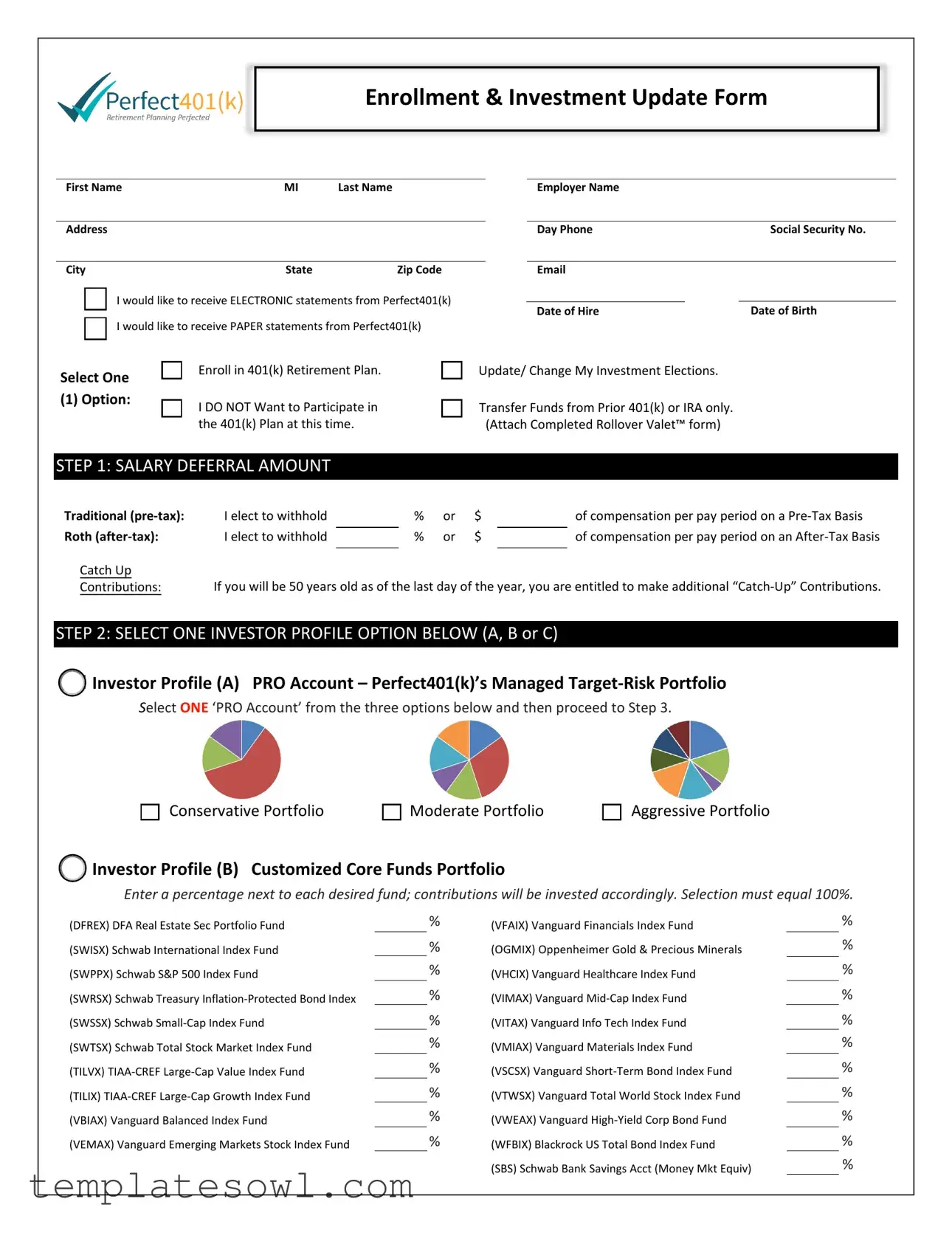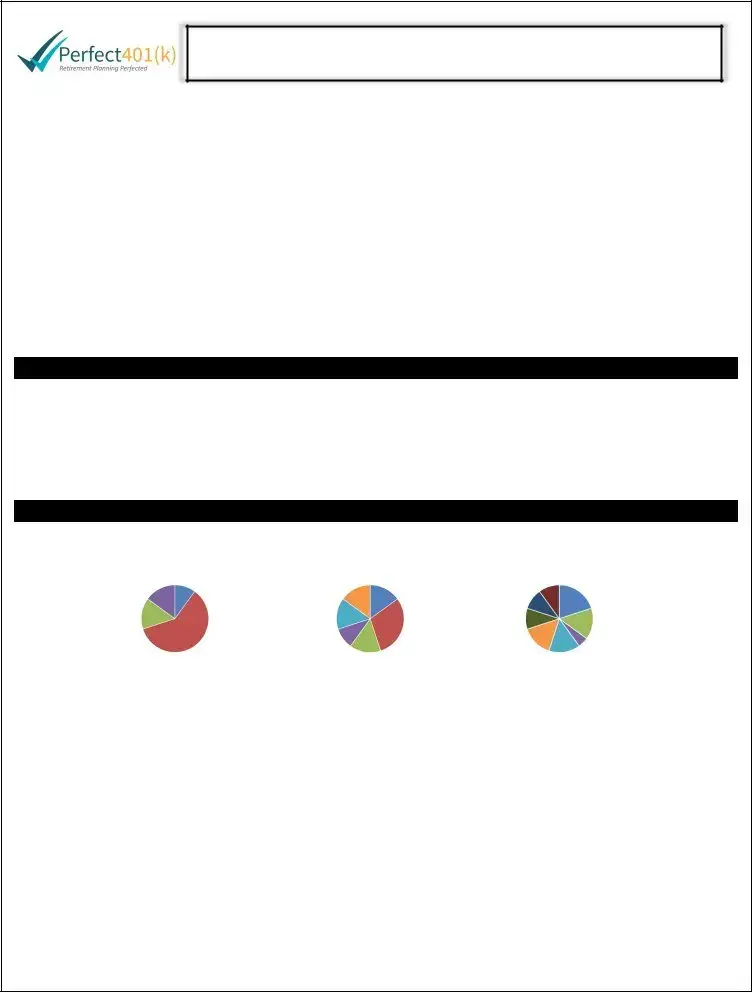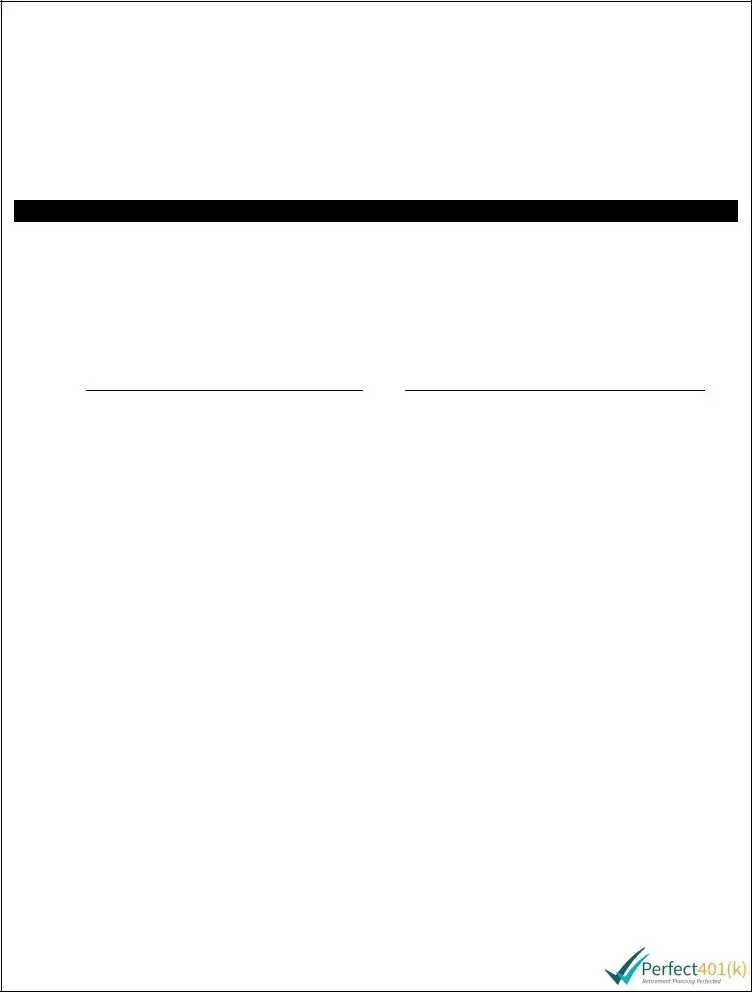What information do I need to provide on the Generic 401K Enrollment form?
You will need to provide several key pieces of personal information, including your first name, middle initial, last name, employer name, address, phone number, and Social Security number. Additionally, you must include your date of hire and date of birth. If you choose to receive electronic statements, be sure to provide your email address. Any missing information may delay the enrollment process.
How do I select my investment options on the form?
The enrollment form provides multiple options for investment selection. You can choose between three investor profiles: Profile A (Managed Target-Risk Portfolio), Profile B (Customized Core Funds Portfolio), or Profile C (Self-Directed Brokerage Window). For Profiles A and B, you will indicate your preferred allocation by selecting corresponding portfolios or entering percentages next to each desired fund in Profile B. Ensure that the total percentage adds up to 100% for Profile B to validate your choices.
What are "Catch-Up Contributions" and who is eligible?
Catch-Up Contributions allow participants aged 50 and older to contribute additional amounts to their 401(k) plans beyond the standard contribution limits. This provision helps boost retirement savings closer to retirement age. If you will be 50 years old by the end of the year, you can indicate your election to make these additional contributions directly on the enrollment form.
What happens if I want to transfer funds from a prior 401(k) or IRA?
If you wish to transfer funds from a previous 401(k) or IRA into your new 401(k) plan, you must complete the appropriate Rollover Valet™ form and attach it to your enrollment form. This ensures that the transfer process aligns with regulatory requirements and helps maintain the tax-advantaged status of your retirement savings. Remember to check with your previous plan for any specific procedures or requirements related to rollovers.
Where do I submit my completed Generic 401K Enrollment form?
Once you have completed the enrollment form, it must be submitted to your employer for processing. Employers are responsible for forwarding these forms to the appropriate parties. If you have any questions or need assistance with the form, reach out to your employer or contact Perfect401(k) directly by phone at (877) 836-1993 or via email at info@perfect401k.com.


